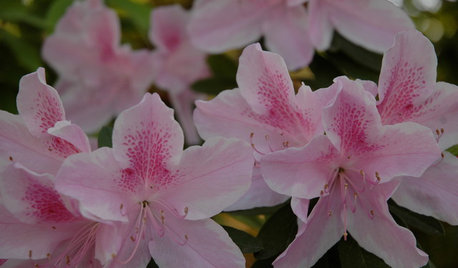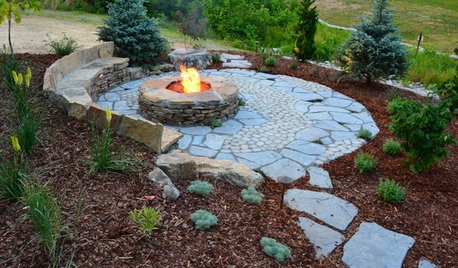Tree Mulch Volcanos
danielj_2009
9 years ago
Related Stories

GARDENING GUIDESNew Ways to Think About All That Mulch in the Garden
Before you go making a mountain out of a mulch hill, learn the facts about what your plants and soil really want
Full Story
GARDENING GUIDESHow to Pick a Mulch — and Why Your Soil Wants It
There's more to topdressing than shredded wood. Learn about mulch types, costs and design considerations here
Full Story
GARDENING GUIDESThe Art of Green Mulch
You can design a natural garden that doesn’t rely on covering your soil with wood and bark mulch
Full Story
GARDENING GUIDESGarden Myths to Debunk as You Dig This Fall and Rest Over Winter
Termites hate wood mulch, don’t amend soil for trees, avoid gravel in planters — and more nuggets of garden wisdom
Full Story
WINTER GARDENINGHow to Help Your Trees Weather a Storm
Seeing trees safely through winter storms means choosing the right species, siting them carefully and paying attention during the tempests
Full Story
GARDENING GUIDESHow to Keep Your Trees Healthy
Ensure your trees’ vigor for years to come with these tips for protecting roots, watering effectively and more
Full Story
GARDENING GUIDESTexas Gardener's November Checklist
Planting and protecting are top priorities in the garden this month, so master the mulch and get those trees and shrubs in the ground
Full Story0

HOLIDAYS10 Ways Your Christmas Tree Can Live On After the Holidays
Learn how to recycle your Christmas tree and reap benefits for the environment
Full Story
GARDENING GUIDESHow to Keep Your Citrus Trees Well Fed and Healthy
Ripe for some citrus fertilizer know-how? This mini guide will help your lemon, orange and grapefruit trees flourish
Full Story
FALL GARDENING6 Trees You'll Fall For
Don’t put down that spade! Autumn is the perfect time for planting these trees
Full StoryMore Discussions









ken_adrian Adrian MI cold Z5
edlincoln
Related Professionals
West Milford Landscape Architects & Landscape Designers · Windham Landscape Architects & Landscape Designers · Rancho Cordova Landscape Architects & Landscape Designers · Ellensburg Landscape Contractors · Fairfield Landscape Contractors · Galt Landscape Contractors · La Verne Landscape Contractors · Las Vegas Landscape Contractors · Lynchburg Landscape Contractors · Monterey Landscape Contractors · Old Saybrook Landscape Contractors · Palatine Landscape Contractors · South Farmingdale Landscape Contractors · Vineyard Landscape Contractors · Pike Creek Valley Gardeners & Lawn CareToronado3800 Zone 6 St Louis
tsugajunkie z5 SE WI ♱
ken_adrian Adrian MI cold Z5
mikebotann
Embothrium
edlincoln
tsugajunkie z5 SE WI ♱
severnside
davidrt28 (zone 7)
danielj_2009Original Author
noki
danielj_2009Original Author
plantkiller_il_5
danielj_2009Original Author
mikebotann
danielj_2009Original Author
Embothrium
davidrt28 (zone 7)